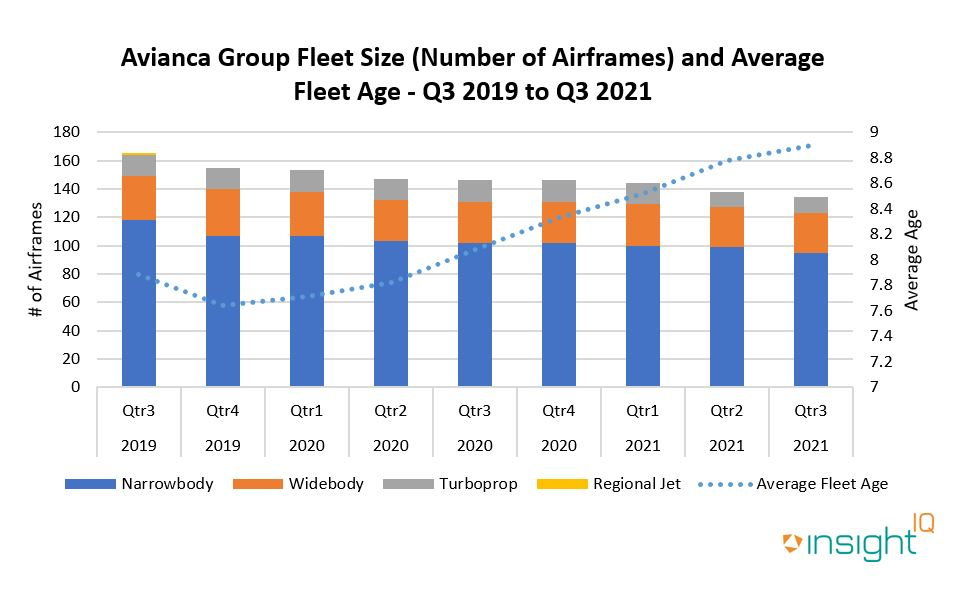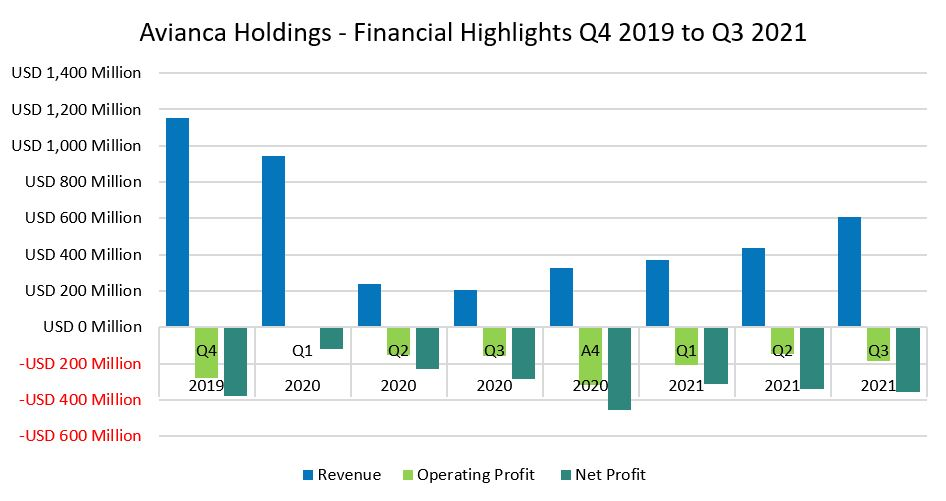11/01/2022
As Avianca exits Chapter 11 bankruptcy proceedings, we ask if the carrier's move towards a low-cost carrier model its ticket to a brighter future?
Avianca's Plan of Reorganization was officially approved by US courts in November 2021, following 17 months of the carrier being under bankruptcy protection. In May 2020, Avianca filed for Chapter 11 bankruptcy protection in the United States, attributing the action to a collapse in demand due to the COVID-19 pandemic and a lack of financial support by the region's governments. Avianca initially filed with the expectation of rejecting 14 aircraft leases, and further went on to furlough some of its employees. Most recently, Avianca has outlined a number of new strategic changes to aide in achieving profitability, chief among them moving from a full-service carrier (FSC) model to a low-cost carrier (LCC) model.
Avianca reorganisation plan hinges on a few key themes, which largely come under the umbrella of the move from an FSC to an LCC to better compete with the region's LCCs. The group is looking to incorporate more point-to-point routes as opposed to a hub and spoke model, with a proposed 100 new routes within three years. The Group has also stated it intends to densify its aircraft seating configurations, which should assist in bringing costs and fares down. The group proposes to focus more on Latin American routes, indicating a lack of widebody appetite going forward.
According to fleet data IBA's aviation intelligence platform InsightIQ, the Avianca Group's fleet consisted of 155 aircraft at the end of 2019, reducing to 134 aircraft as of the end of Q3 2021. Since the beginning of 2020, 27 aircraft have exited Avianca's fleet, of which 23 have been lease ends (mostly Airbus A321ceo, A330ceo, and A319ceo types). The group has also sold four ATR72-600s, as it moves to remove all regional jets and turboprop aircraft from its fleet. We note that a six of the aircraft initially identified for rejection in Avianca's early filings still remain with the group, indicating that favourable agreements were met with the respective counterparties for those assets. While there have been 27 fleet exits, we note 14 new leases linked across the group from May 2020 to October 2021, mostly for Airbus A320ceo and A320neo types.

Net losses at Avianca continue to amass as of Q3 2021, though operating costs appear to have largely stabilised and revenues are improving, a good indication that the group's cost saving efforts are coming to fruition.

Source: Airline Financial Statements, IBA Operator Score Index
Avianca's reorganisation plan has been approved, a key milestone for the group going forward. The approval of the plan indicates growing confidence in the group's new strategy and ability to perform going forward. As one of the biggest airline groups in Latin America, the group has the scale to perform on par with low-cost carriers in the region. However, new COVID-19 waves and new variants remain an existential threat to the industry, and these may have a negative impact Avianca's return to profitability in future.
IBA's InsightIQ analysis platform flexibly illustrates multiple asset, fleet and market positions, actual and potential, to inform client choices and identify acquisition opportunities. Immediate access to crucial aircraft, engine, lease rate and fleet data eases appreciation of historic and future aircraft concentrations and operator profiles.